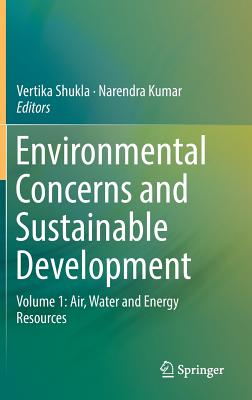Tracing the Sources and Fate of Contaminants in Agroecosystems: Applications of Multi-Stable Isotopes
Adu-Gyamfi, Joseph, Skrzypek, Grzegorz, Imfeld, Gwenaël
- 出版商: Springer
- 出版日期: 2024-05-01
- 售價: $2,570
- 貴賓價: 9.5 折 $2,442
- 語言: 英文
- 頁數: 166
- 裝訂: Hardcover - also called cloth, retail trade, or trade
- ISBN: 3031472640
- ISBN-13: 9783031472640
海外代購書籍(需單獨結帳)
商品描述
The objective of this open access book is to present protocols, methodologies, and standard operating procedures (SOPs) used for the identification of sources, transport, and fate of agro-contaminants and illustrate them with several case studies of successful applications. The Soil and Water Management & Crop Nutrition (SWMCN) Subprogramme of the Joint Food and Agriculture Organization (FAO)/International Atomic Energy Agency (IAEA) Centre of Nuclear Techniques in Food and Agriculture, through a Coordinated Research Project (CRP) in partnership with national and international research institutes, developed and evaluated a set of analytical techniques (the toolbox). The toolbox integrates multiple isotope tracers that provide information on the origins and pathways of multiple pollutants through agro-ecosystems, thereby providing more accurate guidance on mitigations. However, land management strategies to address and control the transport of pollutants from soil to water bodies remain the shared responsibility of farm and aquaculture operators, agro-chemical manufacturers, and policymakers in food and agriculture as well as the mining sectors. This book is structured into eight chapters covering (i) an overview of the book's content, (ii) guidelines for designing water sampling programmes, (iii) the use of mixing models applicable to tracers for water pollution studies, (iv) compound-specific isotope analyses to investigate pesticide degradation in agricultural catchments, (v) the use of stable oxygen isotope composition of phosphate to investigate phosphorous in soil-plant continuum, (vi) the use of stable sulphur isotopes to disentangle agro-pollutants from other contaminants, (vii) nuclear tools used in sediment source apportionment, and (viii) the conclusions and perspectives forward. The book offers up-to-date information, and we hope it is a great source of information for students, researchers, and policymakers. The SWMCN subprogramme thanks all the contributors involved in the preparation of this publication.
商品描述(中文翻譯)
本開放存取書籍的目標是介紹用於農業污染物來源、傳輸和命運鑑定的協議、方法和標準操作程序(SOP),並通過多個成功應用案例加以說明。聯合國糧食及農業組織(FAO)/國際原子能機構(IAEA)食品和農業核技術中心的土壤和水管理與作物營養(SWMCN)子計劃通過與國內外研究機構合作的協調研究計劃(CRP)開發和評估了一套分析技術(工具箱)。該工具箱整合了多種同位素示踪劑,可提供有關農業生態系統中多種污染物來源和途徑的信息,從而提供更準確的減緩指導。然而,解決和控制從土壤到水體的污染物傳輸的土地管理策略仍然是農場和水產養殖業者、農業化學品製造商以及食品和農業政策制定者以及礦業部門的共同責任。本書分為八章,包括(i)概述本書內容,(ii)設計水樣品採集計劃的指南,(iii)適用於水污染研究的示踪劑混合模型的使用,(iv)化合物特異性同位素分析用於研究農業集水區中的農藥降解,(v)穩定氧同位素組成用於研究土壤-植物連續體中的磷,(vi)穩定硫同位素用於區分農業污染物和其他污染物,(vii)用於沉積物來源歸因的核工具,以及(viii)結論和展望。本書提供最新信息,我們希望它對學生、研究人員和政策制定者是一個很好的信息來源。SWMCN子計劃感謝所有參與本出版物準備的貢獻者。
作者簡介
Grzegorz Skrzypek, West Australian Biogeochemistry Centre, School of Biological Sciences, The University of Western Australia, Perth, Western Australia. Grzegorz has 242 years of experience in the field of stable isotope geochemistry, hydrochemistry and ecology since his PhD (1999) from The University of Wroclaw (UWr). Grzegorz is currently working as Associate Professor and Coordinator of MSc Ecology specialization at The University of Western Australia (UWA). Grzegorz has published >80 several ^80 papers on applications of stable isotope techniques in hydrological, hydrochemical, pollution, ecological and paleoclimate studies. He uses stable H, C, N, O, S, and Sr isotopes to trace water budget, nutrient fluxes in natural environments, and dispersal of pollution in environments impacted by mining and agriculture. He held a prestigious Australian Research Council Future Fellowship at UWA (2012-2015) and Foundation for Polish Science Scholarship at UWr (1999-2000). Currently, he is serving as the deputy director of the West Australian Biogeochemistry Centre at UWA (wabc.uwa.edu.au). Grzegorz has been a chief investigator on a number of research projects in Europe and Australia, and an expert on IAEA Technical Cooperation Projects and IAEA Technical Meetings.
Gwenaël Imfeld, Isotope and Experimental Biogeochemistry, University of Strasbourg, Strasbourg Cedex, France. Gwenaël is a research professor at the French National Centre for Scientific Research (CNRS) in environmental biogeochemistry, at the Laboratory of Hydrology and Geochemistry of Strasbourg (PhD degree in 2008 at UFZ-Leipzig, Habilitation in 2013, University of Strasbourg). His research interests revolve around pollutant biogeochemistry, microbial transformation, and ecology in continental hydrosystems, and freshwater sustainability, resilience, and adaptation of socio-hydrosystems. His current research focuses on the degradation and transport of micropolluants in wetlands, soils, and aquifers, combining microbial and stable isotope approaches (CSIA). Gwenaël is leading the research team 'Isotope biogeochemistry' with analytical facilities for chemical and isotopic analyses of trace elements and organic compounds. He is Director of the Research Initiative in Sustainability and the Environment (RISE/FERED) of the University of Strasbourg/CNRS and in the Editorial Board of Chemosphere.
Lee Heng, Soil and Water Management & Crop Nutrition (SWMCN) Section, Joint FAO/IAEA Centre of Nuclear Techniques in Food and Agriculture, International Atomic Energy Agency (IAEA), Vienna, Austria. Lee is working as the Section Head of Soil and Water Management and Crop Nutrition (SWMCN) Subprogramme in the Joint FAO/IAEA Centre of Nuclear Techniques in Food and Agriculture (www.iaea.org). She has more than 30 years' experience in soil-plant-water interactions, agricultural water management and water use efficiency, integrated nutrient water interactions, and diffuse pollution control for sustainable agricultural production systems, at both national and international levels. Her work covers countries in Africa, Asia, Europe, and Central and Latin America on sustainable land and water management for climate-smart agriculture and the efficient use and conservation of agricultural resources to enhance food production and environmental sustainability. She is the author and co-author of several books and book chapters and research publications in refereed journals. She has won several awards for her professional achievements, including the IAEA Merit, Promotion (2004) and Superior Achievement Awards (2018) and the USDA-Agricultural Research Service (ARS) Outstanding Sustained Effort Technology Transfer Award for Outstanding Work in Technology Transfer to Users (2012).
作者簡介(中文翻譯)
約瑟夫·阿杜-賈姆菲(Joseph Adu-Gyamfi),土壤與水資源管理和作物營養(SWMCN)部門,聯合國糧食及農業組織/國際原子能機構食品和農業核技術中心(Joint FAO/IAEA Centre of Nuclear Techniques in Food and Agriculture, International Atomic Energy Agency (IAEA)),奧地利維也納。約瑟夫目前擔任綜合土壤肥力管理官,為IAEA在非洲、亞洲、歐洲、拉丁美洲和加勒比地區的國家、區域/跨區域技術合作項目提供技術支援,研究使用多穩定同位素指紋來識別環境中的污染源和傳輸途徑(www.iaea.org)。他的工作涉及開發應對氣候變化對農業系統和糧食安全、土壤和水質的影響的氣候智能農業實踐,在發展中國家進行。他在不同的研究、學術、國家和國際組織以及發展顧問公司擁有超過30年的同位素在作物系統中測量和監測土壤、水和營養之間相互作用的經驗。他是四本書的作者和合著者,並在多本書籍章節和經過同行評審的期刊上發表了多篇研究論文。他因其專業成就獲得了多個獎項,包括2002年ICRISAT傑出研究科學家、乾旱地區根系研究特別獎(日本根系研究學會)、IAEA優秀成就獎(2018年)和功績獎(2022年)。
格烈戈日·斯克日佩克(Grzegorz Skrzypek),西澳大利亞生物地球化學中心,西澳大利亞大學生物科學學院,澳大利亞珀斯。格烈戈日自1999年在弗羅茨瓦夫大學(The University of Wroclaw)獲得博士學位以來,在穩定同位素地球化學、水文化學和生態學領域擁有242年的經驗。格烈戈日目前擔任西澳大利亞大學(The University of Western Australia)的副教授和碩士生態學專業協調員。他在水文學、水化學、污染、生態學和古氣候研究中發表了超過80篇論文。他使用穩定的H、C、N、O、S和Sr同位素來追蹤自然環境中的水循環和營養通量,以及礦業和農業影響的環境中污染物的傳播。他曾在西澳大利亞大學擔任澳大利亞研究委員會未來研究員(2012-2015年)和弗羅茨瓦夫大學波蘭科學基金會獎學金(1999-2000年)。目前,他擔任西澳大利亞大學西澳大利亞生物地球化學中心的副主任(wabc.uwa.edu.au)。格烈戈日曾擔任多個歐洲和澳大利亞的研究項目的首席調查員,並擔任國際原子能機構技術合作項目和技術會議的專家。
格威納爾·安菲爾德(Gwenaël Imfeld),同位素和實驗生物地球化學,斯特拉斯堡大學,法國斯特拉斯堡塞德克斯。格威納爾是法國國家科學研究中心(CNRS)的環境生物地球化學研究教授,就職於斯特拉斯堡水文地球化學實驗室(2008年在UFZ-Leipzig獲得博士學位,2013年在斯特拉斯堡大學獲得博士後資格)。他的研究興趣圍繞著大陸水系中的污染物生物地球化學、微生物轉化和生態學,以及淡水可持續性、社會水系的適應性和韌性。他目前的研究重點是濕地、土壤和含水層中微污染物的降解和傳輸,結合微生物和穩定同位素方法(CSIA)。格威納爾領導著“同位素生物地球化學”研究團隊,擁有化學和同位素分析的分析設施,用於痕量元素和有機化合物的分析。他是斯特拉斯堡大學/CNRS的可持續性和環境研究倡議(RISE/FERED)的主任,並擔任Chemosphere的編輯委員會成員。
李恆(Lee Heng),土壤與水資源管理和作物營養(SWMCN)部門,聯合國糧食及農業組織/國際原子能機構食品和農業核技術中心(Joint FAO/IAEA Centre of Nuclear Techniques in Food and Agriculture, International Atomic Energy Agency (IAEA))。










